For the times they are a changin’
I write about hand methods of woodworking and have done so for two decades and more. I started to write about it because it seemed to me something in that era lacked the dynamism I experienced in my daily work and life designing and making. Change to me seemed a long way off, dauntingly impossible if I’m truthful. It seemed then that all of the magazines I wrote for advertised machines on every other page and my articles were lost. Little did I know people would like the counterculture. Other articles used mostly machines for the work. Routed dovetails and dadoes, jigs to guide wood over cutterheads and blades took up most pages and there I was again sandwiched somewhere I had no control over. Things have changed a little. I thought this might give some background to help those more recent to woodworking understand the demise I saw facing my craft. The internet for me was still a decade away. Magazines dominated back then. There wasn’t much of an alternative at all. I started to teach workshops at Woodcraft in San Antonio Texas, to expand the work and reach out to others. Some of you were there. Tool swap meets were another outlet to reach through and of course the New Legacy School of Woodworking is thriving now. The schedule is mostly up and we have but 50-60 spaces only this year. They are going quite quickly already.
When others draw comparisons with what I teach and write about with machine work, I like it. I like to look and think through what they say because it stimulates thought, yes, but it’s also good to get their take on things. I think other perspectives broaden our horizons. When it comes to machine versus hand tool methods I think I’ve thought long enough and hard enough to know what I really feel these days. If you haven’t really mastered woodworking hand skill, I think it might be less likely that everyone can fully understand the feelings I might speak of in blog posts, articles and videos. Some will, not everyone though.
In my work I use machines a little, much less than most full-time woodworkers. The smallest fraction of time if I’m honest. I think it’s always been that way. I know hand tools of every type inside out. I know machines just as well too. I’ve stripped both down to the bare bones and rebuilt them throughout my life. I like both, but hand tools I have found to be the most freeing in my work. It’s unlikely now that I would ever use a router to make a dovetail. never have and never will. I know, never say never. I doubt I will ever use a tablesaw and dado stack to cut housing dadoes either. These methods seem a bit primitive to me now for some reason. Overkill too. You see this is how I feel and not everyone feels the same way. This has nothing to do with my age. It’s to do with my choices.
People see some of my writings and miss my emphasis to dismantle the decades I might consider more an abuse my craft has suffered.
Three times this week people told to me that machine woodworking and hand tool woodworking were just different ways for working wood; two opposite sides of the same coin, if you will. I’m not altogether sure whether they or I understand what that means, but generally this means that two things are so closely aligned or similar to one another with only minimal difference. Often I have heard this through the years and people actually mean something quite different when they say it. Perhaps more that one way is as good as another and we’re really talking about the same thing at the end of the day. I think to myself, quietly, we’re actually not closely allied or aligned at all. I think that maybe some want to believe that a 12” circular saw blade with 80 tungsten carbide tips replete with expansion relief cuts spinning at 3,000 rpm is the same as a handsaw with 200 teeth, but for the life of me I see these as complete opposites entirely. So too that a Stanley hand plane is the same as 20” planer-jointer with a 3-HP motor. They may feel that they are as safe with these pieces of equipment as I am with the saw and plane, but they’re not. No matter how you slice it, they are not flip sides of the same coin.
I don’t think I have ever said that machines are bad, useless, unnecessary or should never be used. I have said that for certain groups, massive groups, the majority of people wanting to work with wood in fact, they are intimidating and should be intimidating and that they are highly invasive, intrusive, noisy, dirty and most often for most woodworkers, unseemly and generally totally unnecessary. Not only that, I’ve proved it.
First of all I think it’s important to identify who woodworkers are and what woodworkers are. Often enough I read and hear that these two coin faces are the same as a journey and the thought is quite nice although rather simplistic to me. On the one hand you drive from A to B by car and arrive there in quick time, dry, comfortably warm and fresh. On the other hand you can walk, smell the flowers, stop when you want and take in the views. You may get wet or cold, ache from time to time but of course that’s all part of the experience. You will also take 20 to 30 time longer to cover the same ground but, hey, more experience is good. But the two are not the same journey even if they go on the same roads and pass the same scenes.
I thought about this seriously and wanted to get back to anyone who has expressed these differences in this way about working wood versus machine operating. I concluded this. Professional carpenters and even furniture makers must mostly use machines and work within the limits of those machines to be efficient and constructive with parameters surrounding costs. They gotta pay the bills. That’s a group we generally call professional woodworkers. On another sphere are people who do not work wood for a living. This is the majority shareholder in the world of woodworking in the west at least. This group massively outnumbers the professional group hundreds to one. This group actually wants to work wood because it finds the whole experience fulfilling, uplifting, rewarding aspirational, inspirational. This is the group I reached out to decades ago and today see emerging as the core element of who I personally do what I do for. This massive group wants to understand the traditions of hand work in woodworking and is prepared to fully invest immersively in everything to make that happen. I love that this is happening and an increasing level every day. It’s an amazing thing that today we are able to help woodworkers learn to master skills not just by the handful any more but by the thousands if not the hundreds of thousands. I love the fact that it matters so much to so many who now feel just the same way I have throughout my life.
When I first started to express my concerns about the demise I saw, magazines were the only outlets by which to make change. The magazines were somewhat hamstrung and unable to truly express any views with much real potency because they were paid by the advertisers and advertisers then and now are predominantly selling machines. Thankfully the articles on hand woodworking gained more and more ground and a steady number of people started to seek out what we were declaring and proving worked. It wasn’t just me, lots of others got on board too. Today, judging by the hundreds upon hundreds of emails and comments and messages I get, people now understand fully that when we talk about machine woodworking we are identifying a highly sophisticated industrial process developed for mass manufacturing. We identify a strategy that’s intended to present machine woodworking as a modern and safe system for domestic use. There isn’t too much focus on the dangers that the processing of material is in the scheme of things.
On another front, it has been refreshing to see how the internet has opened new horizons for the little fish to replace magazines to become the discussion groups and forums on each continent and in each language around the world. Now we get the real philosophy surrounding these diversely different worlds. Yes you must pick through the advertising and such, but then you find a gem and you follow it.
Trying to draw a parallel between the two worlds often shows a more modern view but rarely shows just how distorted perspectives have become. As I said, when I started out on this path it wasn’t really intentional until I saw the intent of the machine makers and mags and then I made it my intentional path to redress those imbalances I encountered. To do that I decided to speak one language only until others learned the language too. Hand tools became my way of connecting with those lost in the more of machine speak. It worked, it’s working and it will always work. Now i am not on my own (I never was really, it just felt like it most of the time). This secured my tenure and people that once wrongly thought my views were against machines started to listen and listen all the more. When people come to the school and see a machined stack of wood they are surprised to hear I have a full machine shop to machine the 500 pieces they see on the bench tops. If I turn on a bandsaw or use a drill driver they make noises as though I have some hidden closet issues, but that’s more because they don’t really associate me with machines. A brief explanation of finding the balance clears everything.
Back to something I said a little earlier. Through the years I discovered that there are indeed different camps, different perspectives and different intentions. Through the early decades of the last century amateurs were distinguished from professionals by the fact that amateurs used more hand tools and took their time to work the wood at weekends because the process was therapeutic, relaxing and an alternative to an otherwise stressful or boring life. Machines were made for industry and workers on machines were known as machinists back then. Something started happening in the 60s where machine manufacturers came out with scaled down models of industrial machines that suited the new home workshops. Mostly this was an American thing, but still highly influential. TV workshops came on the scene and increased people’s confidence enough to take up machine only methods of working wood. They saw now that they could create things without developing the kind of skills necessary for hand work. TV once again had a powerful influence that for decades showed the more modern way and people embraced the machines fully. This then left young people out of the workshop, but we are seeing change come. Suddenly machines had space allocated to them. A massive footprint not commonly available to most living in apartments and small houses, inner cities and high rises. These people too had a penchant to learn woodworking and of course what was available mostly was the New Yankee Workshop with PBS. Did it damage the face of woodworking. Well, perhaps it did and perhaps it didn’t. What it did was whet the appetite for people to get out there and do it themselves. It became something of a stepping stone. Yes, the big machine names were the backers but at least people saw wood being worked. Through the last two decades we saw new doors opening whereby people like myself could reach the new audience previously unattainable. Today we are seeing the resurgence I at one time could only dreamed might happen. I think it’s reaching out like this that we take back lost ground bit by bit. Please join us and tell your friends what you’ve discovered for today’s woodworker. get the youngsters out there with you. Let them join you in becoming a real woodworker in a real woodworking world doing real woodworking with your hands. You will never regret it. Its progressive, it’s real and it’s real power-tool woodworking at its best when you use your own hands, your own renewable energy custom matched to your own energy needs.



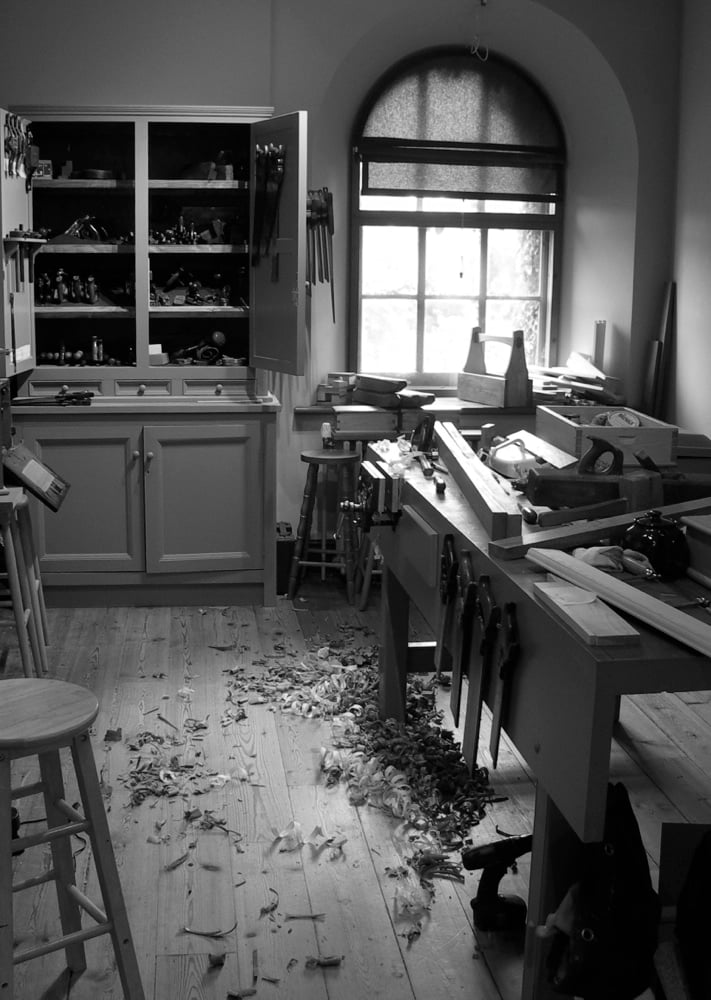

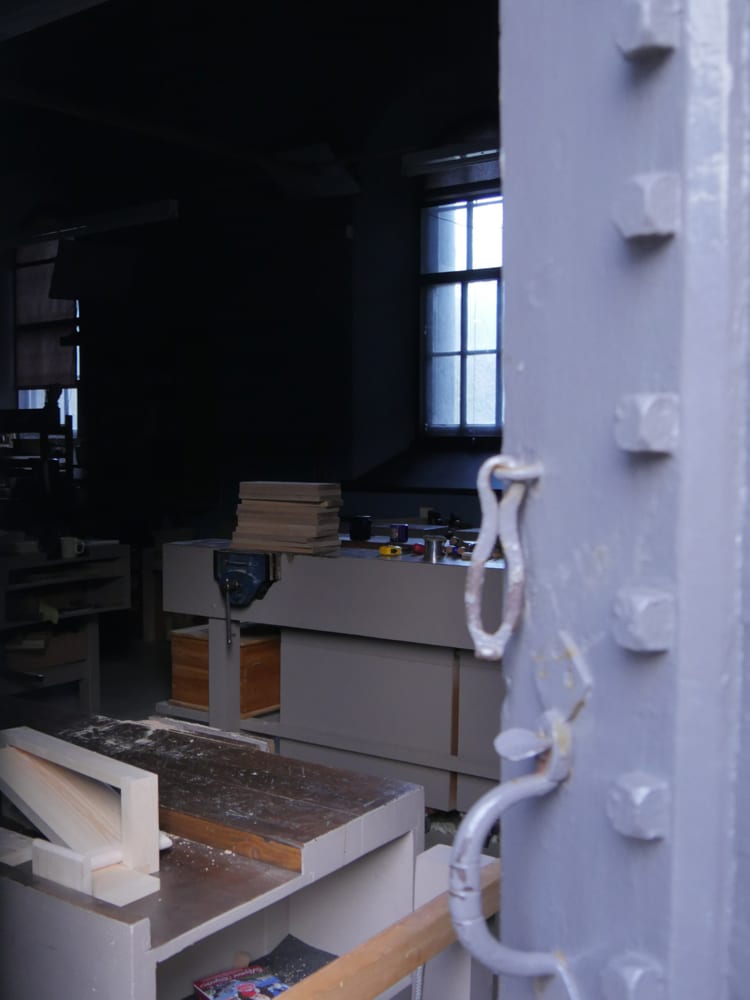
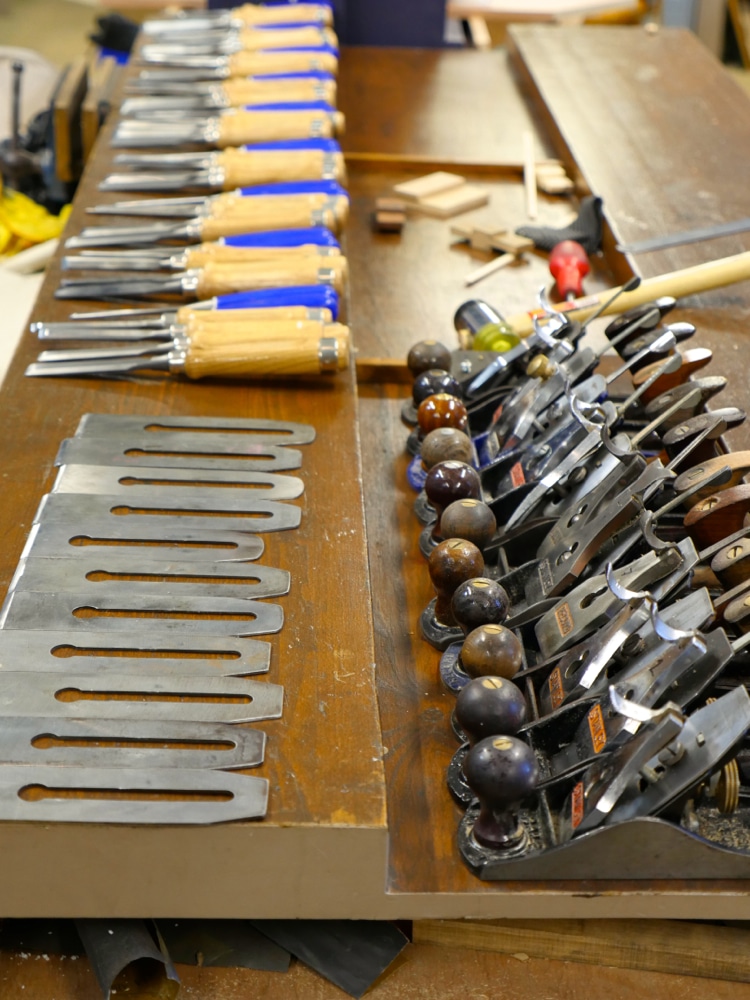
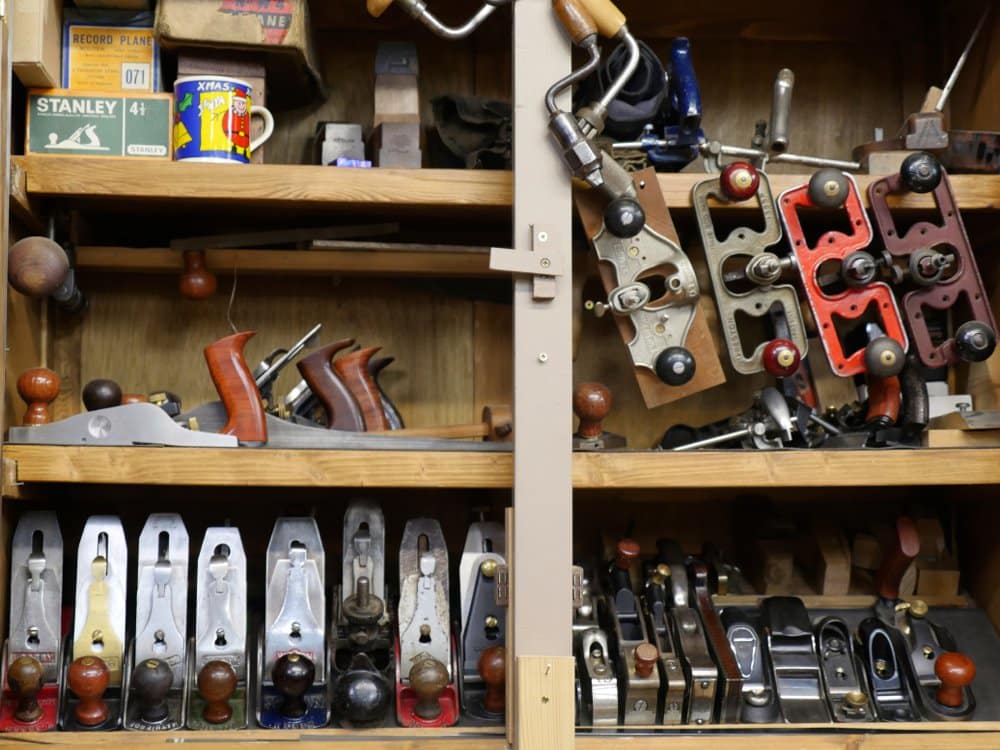
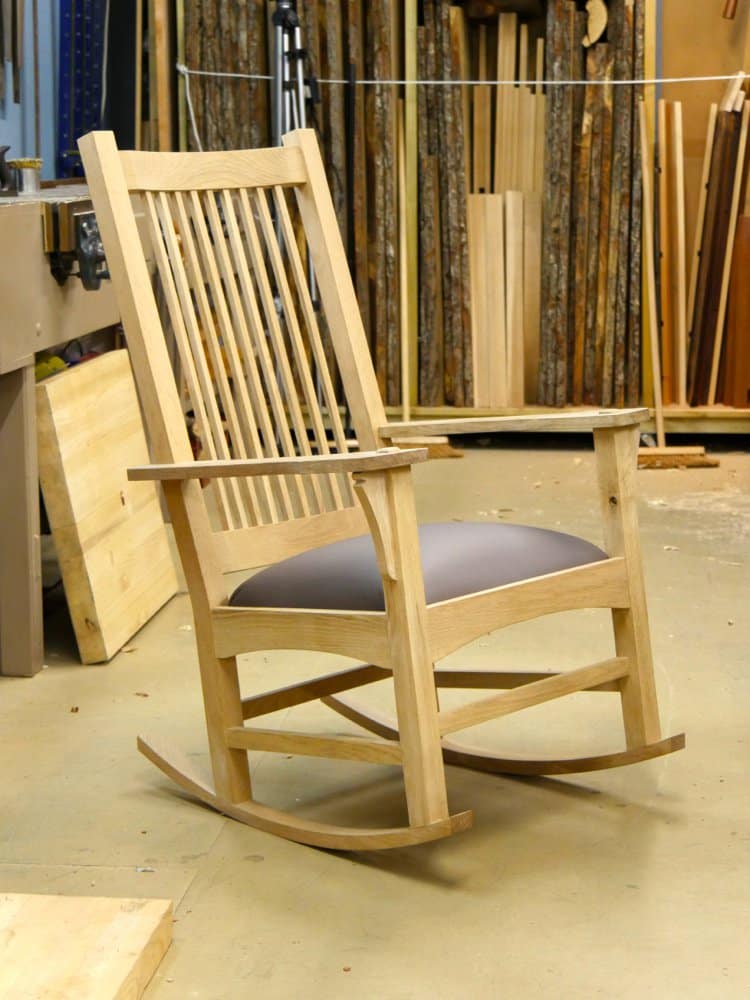
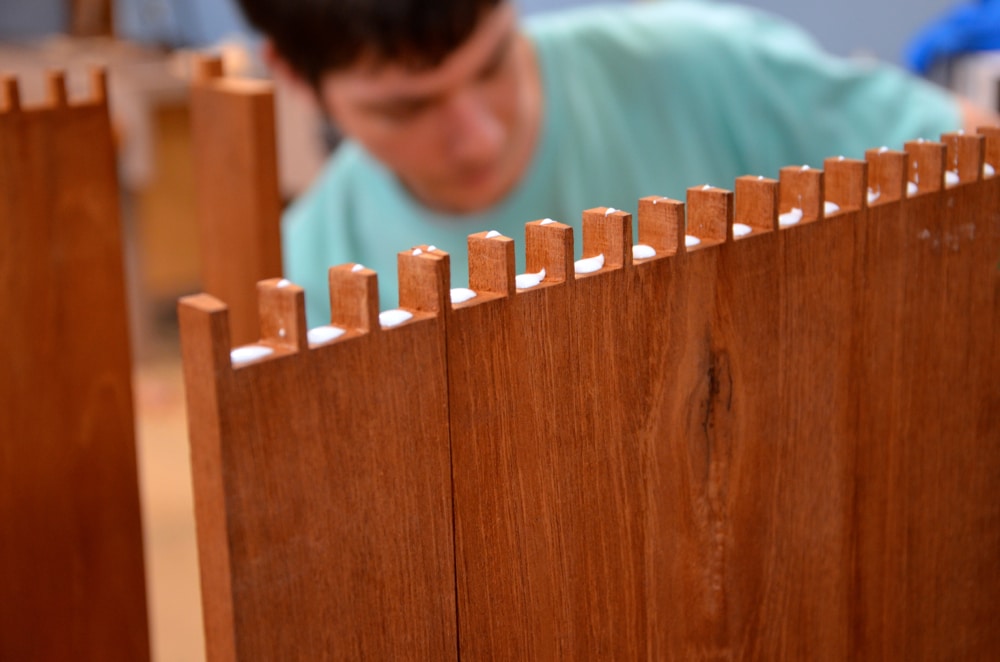

Paul,
Since a brief chat with you in Saratoga, NY several years ago I’ve enjoyed your philosophy on the process of woodworking as opposed to the race to the finish. Over the past three or four years I’ve sold most of my big power tools and have not had an occasion to regret it.
Your right, it’s a different pace, but the journey is more enjoyable. I also like using tools that don’t require a computer chip to stop cutting when the blade comes in contact with my fingers… The original sawstop.
Thank you again for describing so well what it is your do and why. It makes me go “Ahaaaa.”
Henry
I’m signed up for the duration.
I live in the States and in years gone was a loyal viewer of the New Yankee Workshop and The Woodwright Shop on PBS.
Norm’s New Yankee Workshop must have well over 10 grand in woodworking equipment, mostly machines, and a huge one-man shop. What he turns out is good but nothing like the quality you create. Many a time he does not show you how to set-up to “make the cut”, you only see him “make the cut”. Using the machines he has almost anyone can “make the cut”, its the figuring out and setting up that takes the time and skill.
Roy, of the Woodwright Shop, has what seems like the corner of a mess for a shop, my shop resembles that, yet I feel he turns out nice pieces using mostly hard to find tools.
I much prefer the way you do woodworking. To do quality work it takes quality tools. They need not be expensive or trophy tools like some of the harder-than-a-rock trophy benches. Its a workbench for gosh sakes not a boardroom table. I’ll bet there would have been some yelling if you started to chisel out a dovetail on the Cabinet Room table. I love the way you meticulous way teach, show, and explain what you are doing and why.
Paul – kerrville here – Norm was the initial catalyst in late ’80’s I confess without shame BUT you and Jim Tolpin changed my world almost four years ago ! You have led me to the addiction that is the whisk of a sharp plane blade I rescued/sharpened in mere minutes on a Stanley 4 I refurbished based on your book/DVD’s/youtubes/Masterclasses. I am indescribably grateful for your commitment to sharing your world so selflessly with all of us.
Paul, great blog.
There is one matter you might wish to consider – paragraphs please. Large slabs of text are very hard to read/comprehend. I fear people are skipping over the text and just looking at the pictures.
I am amazed you have the time to write the blog, and understand that only limited editing is feasible – but paragraphs are quick to do. I am sure you know this (I regularly need to remind myself), but when you break up the text into paragrpahs, you quickly discern scattered thoughts, and waffle, and tangled grammar.
Best wishes
Peter
Your’e right. Tis a rough writer that I am. I always suppose no one reads these too much though.
Words from the heart, not sifted through an editor. Much preferred, Sir.
You are so very wrong – they are carefully read and considered by so many.
Thank you.
Absolutely – part of my daily routine !
I think you suppose incorrectly sir. I don’t often respond but always read (not skim) every one. As I am usually one of the last to catch on to such things, I can not be the only one.
As much as you say you see the effect you are having, I believe it is far more profound and widespread than you realise. Just look at the responses you have from each post. Then remember that most people don’t respond due to various reasons. Some think what they have to say has already been said and/or feel their thoughts unworthy.
Your words have revived something in me I had forgotten. While it’s probably too late for me to step off the conveyor belt, I at least I can see value in my leisure time. What you and the team are doing is increadably important, keep up the great work.
Mark.
I am not an avid reader, since my mind always takes detours when reading someone else’s meanderings…but I have grown fond of Paul’s stream of thought writing style. Similar to prose (maybe not quite), always attempting to describe the more elusive aspects of craft and life.
Paul is also capable of writing (and speaking) in an clear instructional style, so I always find a balance between his submissions.
I always want to write the feelings in me, not textual stuff, but contextual. I never had an English lesson after I was 11 years old.
I would categorically state your supposition to be incorrect Paul. There are many people finding a lack of depth in the ‘philosophy’ of mass market dominant thought. Scratch the surface and questions arise, scratch a bit more and a world based on the previous work of generations unfolds and sheds a light on how we have gotten to be where we are. Your modesty in this speaks volumes and whilst your writing may be ‘rough’ as you put it, in no way is it coarse.
I prefer carrying my handtools up several flights of steps and cleaning up after them rather then my power tools in the residences I work in. It is easier a lot of the time. The powertools have their place, I value very highly my portable tablesaw for breaking down stock and rebating at speed on site but the size, weight and dust volume does restrict its use somewhat. Whichever is the most appropriate at the time, having both options is the ideal for me.
Paul, I have just discovered your blog and videos no more than a month ago but have already read through dozens of articles and anticipate greatly each new blog post. Be encouraged you are reaching as you say, hundreds of thousands! I just went to a tool show this past weekend and picked up my first #4 and #5!
I am not discounting Peter’s point about paragraphs. I do think, however, that i can some up my thoughts with one statement. I could not stop reading this article. It had my attention, and kept it for the duration.
A friend of mine have a blog and allways have a good grammatik but loose the feeling.
Hi Paul,
Here’s a topical case in point regarding the dangers of using machines (I hope you don’t mind me pointing to another, and different type of, woodworker’s blog):
http://www.davidbarronfurniture.blogspot.co.uk/2015/03/a-sober-reminder.html
(They say a picture is worth a thousand words!)
All the best – Richard
Hi Paul,
I have to say that your post today has really struck a chord. I was interested in building things in my own home for a sense of “own accomplishment” and to appease my better half. I started by purchasing machines but quickly ran out of space and interest in the process. I started reading through your articles and watching your videos and found that your philosophy matched my own, by taking my time and developing skills I’ll be more satisfied with my own work. I just ebay purchased my first Stanley #4 the other day! I followed your mallet build and built one of my own and the satisfaction I got from hand chopping my own mortise (even though it is quite ugly) was phenomenal. Thanks again for all your wisdom and sharing that with us all without asking for compensation.
Cheers,
-Greg
I use machines and probably always will to do the “donkey work”, but one tool I hope not to use anymore is a power router. Something about a piece of carbide spinning at over 20,000rpm that is a bit unnerving.
paragraph
I only wish I had this kind of education you give to us when I was younger. It would have saved me a boat load of money and time I will never get back, messing around with trying to get precision woodworking from a machine. Thanks to Paul and company I am a much better woodworker than I could have ever been, using machines alone.
Stand your ground Paul,….for you to apologise for gifting your knowledge and skills of creative handcraft to so many versus a process of machine made industrial products cranked out in factories is not necessary. It’s simply a case of apples versus oranges.
The real argument here is human art and artistry versus machine operated labor (inanimate vs. animate). All art (in this case fine woodworking) comes from the hand and eye of humans. All machines were created the same way. No machine can create anything.
Computer printers can reproduce famous paintings. Can they conceptualize, formulate, create and paint original art? Computers can now print house structures, but again create nothing. Machines are continuing to separate us from our creative natures instead of their intended purpose of labor assistance. Machines of course replaced animal labor and were developed as time and energy savers, but never can compete with the human brain, eye and hand.
This is why the teaching of hand methods in all of the arts is powerfully important and critical as we move forward in a world where the reliance upon machines has become epidemic. We already run the risk of being slaves to the machines, particularly the young among us, allowing them to dominate every aspect of our lives. I urge all who use machines and computers to dig deeper and learn to develop brain, hand and eye skills, the creative satisfaction of which no machines can replicate.
Paul, thank you for introducing me to the hand plane. I love it. I just made my first little project with it – an iPad stand for my wife. It’s quite a feeling when you can take a rough sawn piece of cherry, and create a perfectly smooth, perfectly square board with only a hand plane. And I did it much quicker that I thought I could.
Thank you for writing just like you do. It’s perfect. It’s not perfect. But it’s from your heart. It’s you we hear when we read.
I have a confession to make. Having prepared countless boards by hand to a consistent thickness in order to make my latest project, a chest of draws to hold my chisels and marking out tools etc, I realised that in my limited spare time it was taking me weeks and weeks just to get to the point where I could start the joinery. I recognised the beginnings of being disillusioned and sat myself down for a good hard think. I eventually decided to buy a good quality planer thicknesser and to speed up the dimensioning so I could concentrate on the practicing of the joint making. I was able to very quickly produce identical boards with which to make the four draws I needed and felt the enjoyment returning. Suddenly I was into the satisfaction of producing the blind dovetails, housing dadoes and wedged tenons. I really felt back on track. I find it difficult to believe that I am the only one frustrated by the time it takes to prepare stock to get started on a project given the often very limited time we have to enjoy this hobby at weekends and in the evenings. I feel like a bit of a guilty heretic but it was the right way to go for me. I am perfectly capable of producing stock by hand and am very glad I know how to its just that for the most part I am now choosing not to.
Keep up the fantastic work Paul- your a truly a woodworking superstar!
John
John-
I have a jointer/planer (planer/thicknesser) for stock 12″ or less. I will also use a bandsaw for resawing thick boards. Like you, joinery is what I enjoy most. I only wish my jointer/planer was 24″ wide so I never needed to hand thickness a panel. 😉
There should really be no guilt felt at employing a machine for a process that you do not enjoy. One thing I like about Paul’s teachings is that he is reasonable about such things. He shows us that we can enjoy most of this craft without machines, but will mention the use of a machine as an alternative when it provides a solution for grunt work.
John, I think a thickness planer is one of those machines that fits well with the “hand-tool” style of woodworking. Machining lumber roughly is the lengthiest part of the project after the design is done. The other piece of machinery I think is on this list is a mortiser and a bandsaw.
By the way, Chris S. comes to the same conclusions (except bandsaw) in the book The Anarchists Tool Chest.
Machine use is for some a choice, for the majority it’s not really a choice because of individual limits not the least of which are living space, conditions, money, footprint and so on. Whereas I have always been careful to not condemn the use of machines, I also want to encourage people to really search out the balance; to not neglect their personal health, safety and wellbeing. These are rarely assessed or evaluated by machinists and often people only consider speed and efficiency.
Today I spent over two hours of well-worth time and exercise planing rough-sawn oak for a tabletop. I enjoyed this as much as any other part of the project.
Mortise machine? Not anywhere near a necessary machine in my view unless he’s on a production run. Certainly not needed for anything on WWMC projects. Most hand cut mortises 1/2″ x 4″ by 1 1/2″ deep come from the chisel in 4-5 minutes Hand chopping mortises is what most of our woodworking is all about. Enjoying the process, the exercise, the challenge and so on I think. With a little practice speed and accuracy come to everyone. Also, I think that using a mortiser is no different than using a tablesaw or bandsaw or router is to cutting say dovetails or housing dadoes. Is that really where we want to go? Not so sure.
After much consideration I have decided where my personal line is drawn between hand tools and machines. I am definitely with Paul in not wanting to use a bandsaw, table saw, mortiser or router for making joints and profiling edges. I will use a bandsaw for re sawing but only where there is too much to do by hand and I will similarly use my planer/thicknesser for stock preparation where doing it by hand would be too long winded for my available spare time. When I explained in my post above that I had decided to use a planer/thicknesser it was only because of my limited time and not actually because I dislike stock prep by hand because actually I do enjoy it. It’s just that sometimes you need to see progress and eventually a finished product. My smallish chest of drawers was heading for taking me 6 months to complete! When, one day, I have more time on my hands I won’t hesitate to revert back to exclusive use of planes and winding sticks because it really is a satisfying process.
Yes, you see it’s all about balance. I have some stock to prepare tomorrow that I have to do by machine because in this case time is of the essence and other people will be sitting twiddling their thumbs waiting on me. They don’t have that time to spare and i can;t do that to them. Would I ever use a router for dovetails? Well, in 50 years I never have and in the next 50 years I plan on doing just the same. But that’s just me. I do love my machines, but in the right place. As you said, John, at least now you can make your own choice because you have developed the skills to use hand tools.
Yes, balance. That’s a word that keeps cropping up within the realms of quality woodworking.
I think the planer is fine for fine tuning pieces that need that level of accuracy, but the bulk of removal with a roughing plane is great exercise and almost as fast when you take into consideration the time it takes to remove, sharpen and realign cutter heads vs 2-3 minutes to dismount, sharpen and remount the plane iron.
I can not help but wonder how and with what machine I would carve the children’s replacement bicycle seat.
It was done freehand in three hours with a few ancient boxwood spokeshaves of differing sizes. How else?
I like this very much. That’s what I’ve done when my children broke theirs.
Since discovering you Paiul, I have done my best to minimise my use of power tools and invest in hand tools. I have recently subscribed to Fine Woodworking as one of the best magazines that you have recommended and is not available in shops here in the UK. Frankly I am very disappointed as every article assumes that you will have a machine router or table saw to do much of the work. There is one article in the current issue entitled ‘Secrets to a perfect mitred box’. I get to the important bit, how to cut accurately to 45degrees, and it says ‘Tilt the blade to 45degrees, put the sled in the opposite miter slot…’ And that’s it! No clue as to how to get an accurate 45degrees. What a load of rubbish. Where is there a decent magazine that supports your philosophy, or is that impossible with the need for magazines to get income from advertising?
PS Sorry for the typo in your name, Paul!
I know just what you mean, David. I have had to stop reading them and haven’t opened one in a year now. Fine Woodworking is the best the US has to offer I think is what I may have said. With 45% advert pages, I include machine and product tests in that because they buy advertising space in there too, it’s an insult to subscribers and buyers to actually buy a magazine for mainly advertising content and then have 95% of articles extolling only the virtues of machine-only woodworking. Oh well! At least there is no advertising here which loses us a lot of income possibilities. We like clean pages.
Thank goodness for the Internet and your Unplugged Shop. That should really be given more prominence!
Magazine wise the nearest I have found to at least a balance between hand tools and machines is Furniture and Cabinetmaking magazine. Not perfect by any means but plenty of hand tool articles amongst the redone contemporary chair designs that are different for the sake of being different. The publishers have however clearly woken up to the resurgence in interest in hand tools. Worth a look.
John, the online preview looks good. Thanks for the suggestion.
Paul another great Blog, which I look forward to each and every day. As I mentioned several times I to was caught up in the “Norm” craze and actually have met him and his wife in person. I happened to be on a flight from Boston back to Atlanta and they set next to me, very nice people I will say.
Having said that since discovering you a couple years back my focus has been on Hand Tools mostly. I use my Band Saw and Shopsmith occasionally but sold my table saw. I have a 12″ Delta planer the I have never used and a Jet 6″ jointer I used maybe a half dozen times since I bought it 10 – 12 years ago. I have several routers, jig saw etc but again they are collecting dust.
I love the Hand Tools, they are quiet, don’t throw dust every where and you get a little exercise to boot. I have come a long way thanks to you but always looking to learn something new from you.
Thank You and keep up the good work, looking forward to keep going until I am physically not able to any longer. I also enjoy working and trying to teach my ( 2 ) Grandchildren working wood with hand tools.
Steve